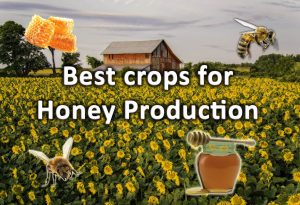Self sufficient homesteaders are always looking to make the very most out of their plot. Therefore a certain amount of planning is involved when developing the site so it reaches its maximum potential.
This is particularly the case when deciding what trees you are going to grow on your homestead. As trees take up quite a lot of space, positioning them correctly is of upmost importance.
Trees occupy the ground for an extremely long time so suitable species selection is crucial. Finding the best trees for your homestead will depend on your goals and specific tastes.
However in general self sufficient homesteaders want trees which have multiple uses. The most typical function of trees however would be to produce a crop. Fruit and nut trees are some of the best trees for self sufficiency and homesteading.
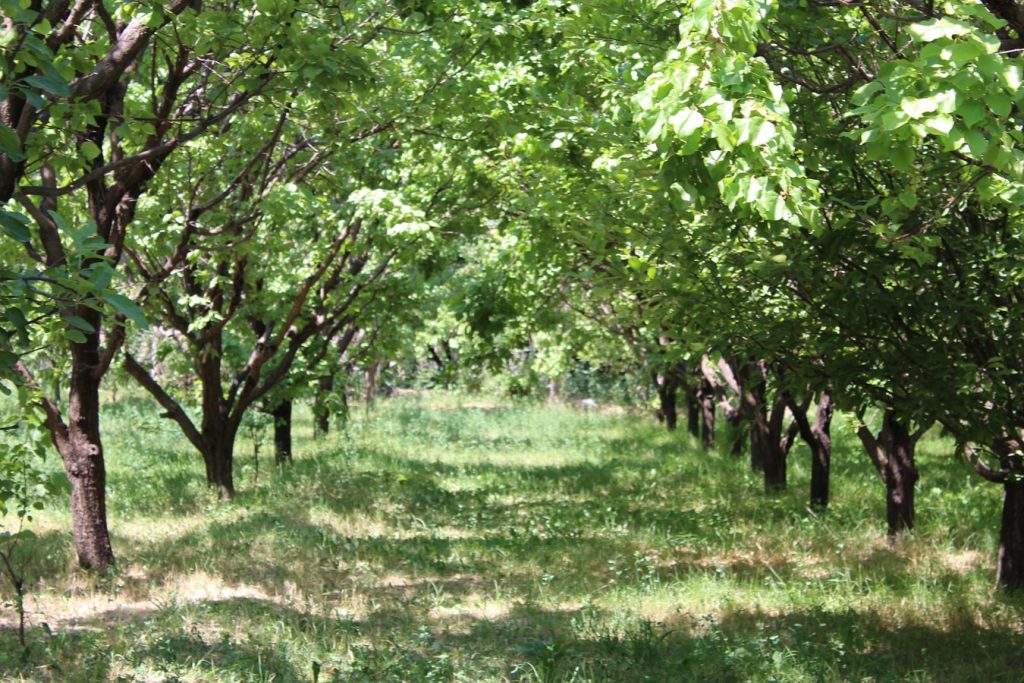
Once planted, these trees can provide a predictable and reliable crop, season after season. However there are trees which can provide other uses as well as edible fruit and nut crops.
Some trees provide both food and other practical functions making them even more valuable. Hence we have searched for the very best trees for homesteading and the most useful for self sufficiency.
Consequently we have come up with our list of the best 23 trees and described the rationale behind their selection below.
1. Cherry
Cherry trees are beautiful small trees which are famous for their striking blossom and luxurious fruits. What is also extremely good about these trees is they are relatively small and do not get out of control.
This makes them perfect for homesteading with the fruits easy to pick when harvest time comes around. Cherries are good to grow if you have a warmer microclimate. This irradiates the risk of early blossom being damaged by late frosts.
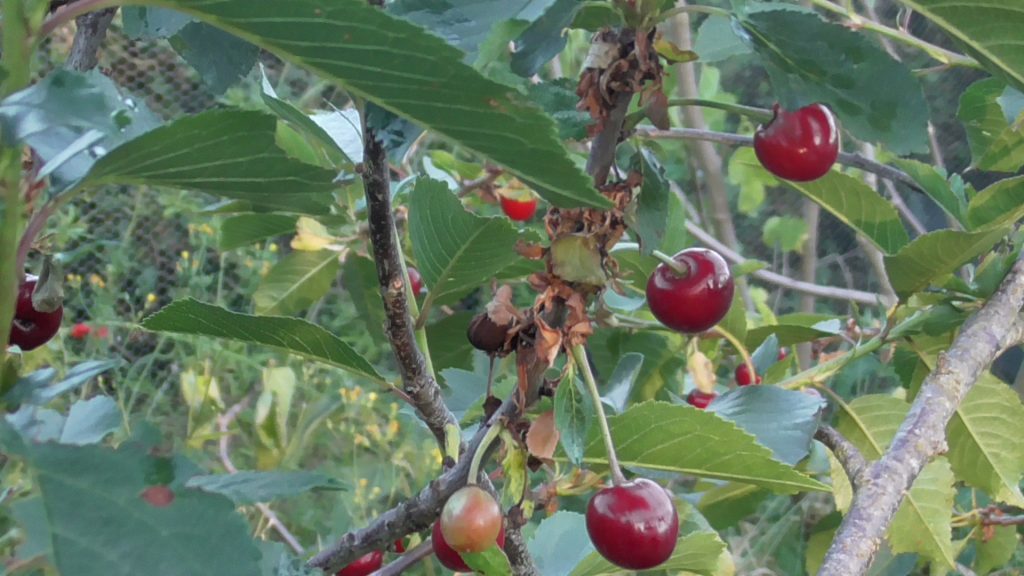
Cherries can easily be pruned into multiple shapes, sizes and forms making them extremely versatile. One potential threat is birds absolutely love eating the fruit!
to combat this, train your trees against a wall or grow them undercover. Alternatively you can harvest the pest birds, ‘typically wood pigeon’ for the table. The sap can be used to make strong glue and the fruits are ideal for drying, jams and wine making.
2. Stone pine
The stone pine is native to southern Europe and the Middle East. This drought resistant pine is characterised by its large, upturned umbrella shaped crown.
Also known as the Mediterranean stone pine it is a common feature of countries such as Italy, Greece, Israel and Tunisia. However the stone pine is very tolerant of many conditions and will happily grow in temperate regions.
The stone pine has been grown for its edible nuts since ancient times. They produce huge pine cones with a very large pine nut which is delicious.
Stone pine resin can be harvested and refined to make turpentine which has numerous uses. The resin also has antiseptic qualities and can be used for medicinal purposes.
3. Beech
Beech trees are native to the temperate forests of Europe, Asia and North America. They have a distinctive grey bark and very glossy leaves which turn golden in autumn time.
This large tree can grow to over 40 metres tall even upon shallow soils and is extremely hardy. It can easily be coppiced for a continuous supply of long, straight, pole like timbers. The timber of beech is extremely durable with a long and fine grain.

This has made it popular for wood working and consequently used as a building material and to make furniture. Its wood is easy to split and is extremely good as a wood burning fuel or scorched into charcoal.
Beechwood is the fuel of choice of wood burning ovens and rocket stoves. The fallen leaves in autumn are slow to decompose and make good quality animal bedding for the winter months.
Beech trees also have edible nuts and make fantastic easy to maintain hedges. This tree has so many uses it is a no brainer for self sufficient homesteaders.
4. Birch
Birch trees are native to temperate regions of Europe and Asia and well known for their white coloured bark. These small trees spread via wind borne seeds are very widespread.
Birch wood is extremely flexible but also very strong; these qualities make it good as a construction material. The tree trunks can be tapped to harvest a sweet tasting birch sap, this can be harvested during the winter time.
The flaking bark of birches is very flammable and its resins can burn very much like a firelighter. This makes it extremely useful for starting fires even when it is wet. This tree can also be managed as a coppice timber for firewood.
5. Sugar Maple
The sugar maple is a deciduous maple native to the Eastern United states and Canada. This tree is particularly famous for the sugary sap which can be tapped from the trunk.
This sap can be made into Maple syrup which very sweet and rich in energy. This can provide a rich source of calories in long cold winters and is a great treat for homesteaders.
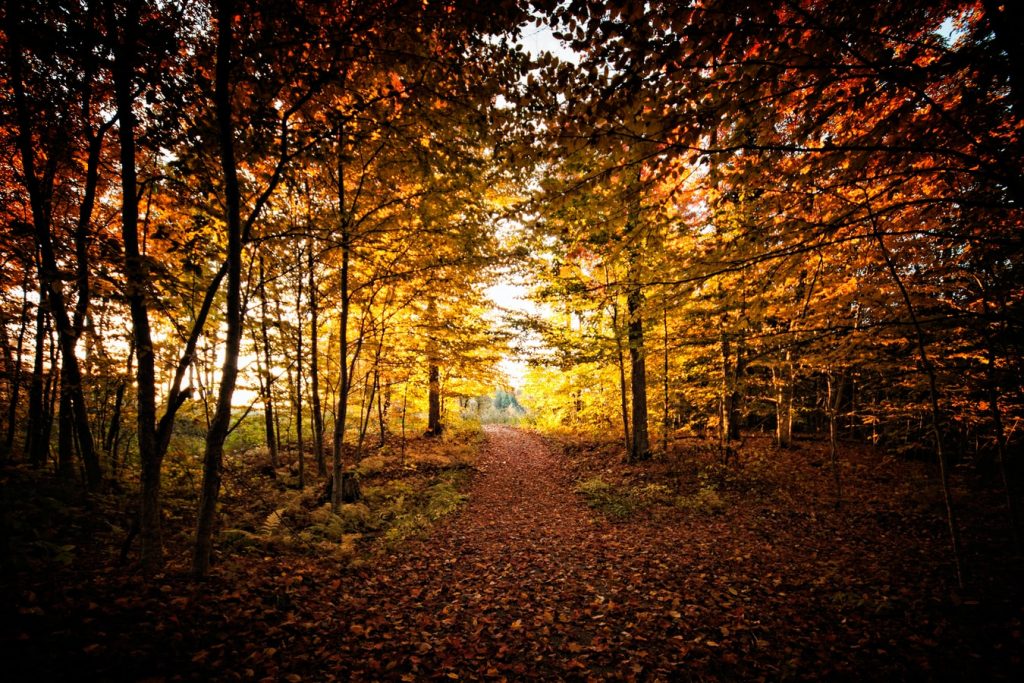
However the sugar maple does just not have a sweet tooth going for it. The timber of this tree is extremely dense and hard wearing. This has made it the timber of choice for gun stocks and hand tools for centuries.
The sugar maple also has many aesthetic qualities including jagged leaves and breath taking autumn colour. It can also be managed as a coppice and left to grow naturally can reach a height of 35 metres.
6. Lime
Also known as the European Lime or linden this tree is widespread across the temperate northern hemisphere. These trees can grow to a large size of around 40 metres tall but can be managed as coppice.
Surprising to many the leaves of these trees are edible and make a perfect base for salads. These thin and delicate leaves can also be used as a wrap for food mixes like vine leaves. The timber is ideal for carvings and musical instruments as well as a building material.
The flowers of this tree make a very popular and tasty tea which can help sooth anxiety. The flowers are very popular with bees and makes extremely high quality honey. Perfect if you are into bee keeping and honey production on your homestead.
7. Fig
Fig trees are originally from the Middle East and produce one of the most luxurious fruits. Figs although originally from a hot climate can take exceptionally cold temperatures.
This makes them ideal for temperate regions with some varieties specifically bred for cold tolerance. Figs are very easy to train and prune into any shape or form. In cooler climates these are extremely effective trained up a sunny wall.

There large, tropical looking serrated leaves make them a great ornamental specimen for the homestead garden. The fruits can be eaten raw, made into jams, dried or made into wine. The leaves can be used as a feed for animals.
8. Mulberry
Mulberry trees are deciduous fruiting trees which originally come from Asia. Despite originating from warmer regions they are very hardy and can adapt a wide range of conditions.
The tree has large leaves which are edible which can be eaten straight off the branches or cooked. They can also be used to wrap up food mixes!
Mulberries however are more famous for the fruit which are delicious. These can be dried, made into preserves or made into wine. These trees are perfect for a well sheltered, sunny site on any self sufficient homestead.
9. Apple
Apples are one of the most widespread and common fruiting trees in temperate climates. Their popularity is for good reason as these trees are extremely hardy and reliable croppers.
Their fruit is extremely versatile and can store very effectively for months. Many self sufficient homesteaders favour apples as their fruits are fantastic eaten raw or used for cooking. Apples can also be made into preserves, chutneys, cider and vinegar.
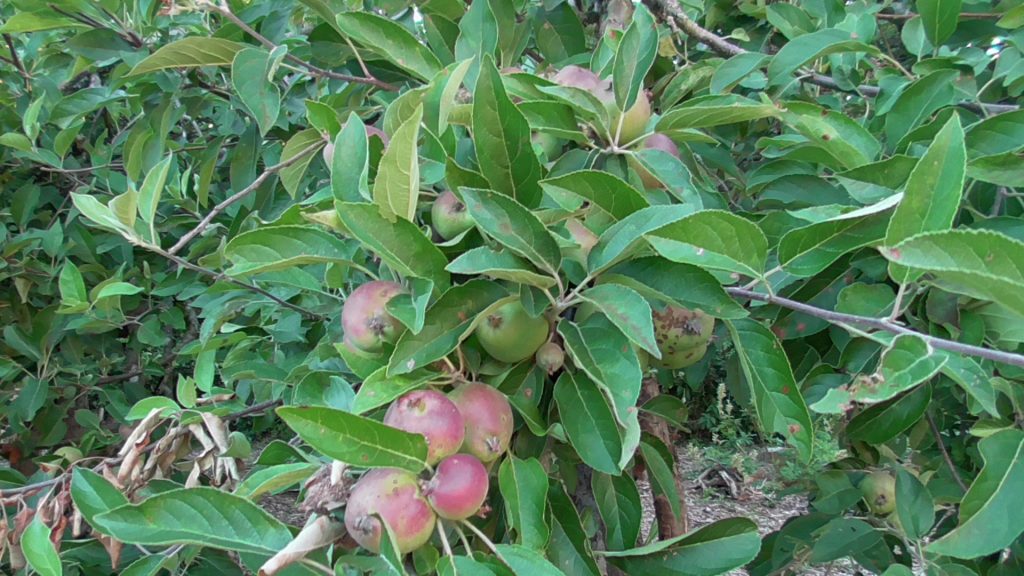
Their multiple uses made them a must and there are so many varieties to choose from. These fruit trees are available in a range of root stocks to even dwarf trees which are perfect for small spaces.
In spring the apple blossom is extremely popular with bees making them also useful to honey production.
10. Plum
Plum trees are not as popular as apples and pears but are perfect for self sufficient homesteads. These fruit trees are extremely tolerant of cold conditions and can tolerate a wide range of sites.
Once planted these take around 5 years to start producing well but well worth the wait. Plum trees rarely get larger than 4 metres tall and can be bought on a dwarf root stock.
They can make great, edible hedges and can be trained up a sunny wall for earlier fruits. The fruits can be dried, make into jellies, chutneys or fermented into wine.
11. Hazel
Hazel trees are widespread in the northern hemisphere and typical of temperate forests. This small tree or large shrub is commonly used as hedging stock and can easily pruned into various shapes.
It has a natural tendency to shoot up runners from the base creating many straight, vertical sticks. This makes it a perfect species for coppicing.

Centuries ago the British would use these straight stick timbers to produce arrows for their longbows. Coppiced trees can provide a sustainable source of fencing materials as well as timber.
The best use of these small trees however is their edible nut crop. These can easily be dry stored throughout the winter months and taste great.
12. Walnut
Walnuts are typically grown today as an ornamental tree as they have attractive foliage and a pleasant form. However they are also one of the best trees for self sufficient homesteaders!
Once established, walnuts produce an edible nut crop which is both high in energy and protein. The nuts are delicious and can be dried or even pickled for long term storage.
Walnut timber is extremely valuable and in high demand. Growing this nut tree on mass could become a wise investment for the future.
13. Chestnut
Chestnuts like walnuts are a highly valued crop which once established is high yielding. Originating in southern Europe this tree can tolerate temperate conditions and can live for many years.
Like hazel chestnuts respond very well to coppicing and their timber has a natural resistance to rotting. This has made it very popular as a fencing material and for external cladding and furniture.

If managed as a coppice chestnut can provide a continuous supply of straight poles. However the best thing about them is their edible nut crop. These are ready to harvest in autumn and can be stored all winter.
14. Willow
Willow or weeping willow is a large tree which typically grows around wetland areas across the northern hemisphere. This tree has been cultivated since ancient times for its medicinal bark which is known to relieve aches and fevers.
The fact that aspirin is now produced from the bark gives testament genius of early civilisation. Willow is an extremely useful tree for self sufficient homesteaders even though it doesn’t produce fruit. Like Chestnuts and Hazel it will readily shoot from the base making it perfect for coppicing.
Willow coppices were very common in history providing quick, growing, flexible timber. This was used for construction, fencing materials and charcoal production.
The long fibrous shoots of this tree are perfect for basket weaving, fish nets and cage traps. The harvested woody materials can also be used as a biomass fuel.
15. Olive
Olive trees are originally from Mediterranean regions and are famous for the production of olives. These are surprisingly hardy but produce well in southern, temperate, regions or places with some level of microclimate.
If you can produce a crop out of them they are an extremely useful tree providing nutritious and energy rich oil. These trees are very drought tolerant requiring no irrigation at all during the summer.
With their grey, blue foliage they are very ornamental and perfect for a sunny wall or patio.

16. Eucalyptus
Eucalyptus trees are originally from the Australian outback and predominantly used as an ornamental. There are a few species of Eucalyptus and some are very hardy of temperate climates.
This Eucalyptus is very drought tolerant and good for open dry areas. The wood of this tree is very strong, durable and resistant to external conditions.
This makes it ideal for fencing, external panelling and furniture. The leaves can be used to make eucalyptus oil. This has multiple uses including treating blocked sinuses and colds.
The dried leaves can also be scattered in livestock bedding to repel fleas, mites and ticks.
17. Burr oak
Burr oak is a large deciduous tree growing up to 50 metres in height and is originally from North America. This temperate oak is famous for its strong timber which has many uses.
The leaves and stems are popular with browsers such as cattle and can be utilised as fodder. The trees acorns unlike many other oaks are edible, tasty and store very well.
The Burr oak is a good all rounder when it comes to self sufficient homesteading.
18. Citrus
Citrus trees include Oranges, Satsuma, Lemons and Limes which are very popular fruits worldwide. Although these do need warm, sunny climates they are hardier than most people think.
Particularly lemons can be grown under glass during the winter in pots and brought out in summer. If grown in a greenhouse a satisfactory amount of fruit can be achieved.
Citrus fruits due to their high acidic content are great for making preserves and pickles. Their antiseptic qualities also make them good for food marinades and medicinal purposes.

19. Honey locust
The Honey locust is a deciduous tree which is native to the temperate Eastern United States. This tree can grow to 30 metres tall but generally grows to about half that size.
This tree has magnificent autumn colour turning bright yellow later in the season. This nitrogen fixing tree adds nitrogen to the soil which benefits other plants.
The seed pods of the tree can be used as a rich animal fodder. Honey locust wood is very durable and is very rot resistant making it very popular for external construction.
20. Siberian pea tree
The Siberian pee tree is a small tree native to the far east of Russia. Being from Siberia it is extremely hardy and can tolerate cold, wet temperatures and poor quality soil. It has become popular as a garden ornamental due to its bright yellow flowers.
Like Honey locust it is also nitrogen fixing making it useful to surrounding trees. The small peas of these trees are edible and can be dry stored in jars for leaner times. The pea tree has very fibrous roots making it a firm choice for erosion control.
21. Pecan
The Pecan is a large deciduous tree native to the Southern United States of America. It can grow up to 40 metres tall and prefers a climate somewhere between Temperate and Mediterranean.
The primary use is for its edible nut which is a high source of fat and protein. The pecan also produces high quality timber which is dense and hard wearing.
Pecan timber is traditionally used for building furniture and its woodchips have a rich aroma which is used for smoking meat.
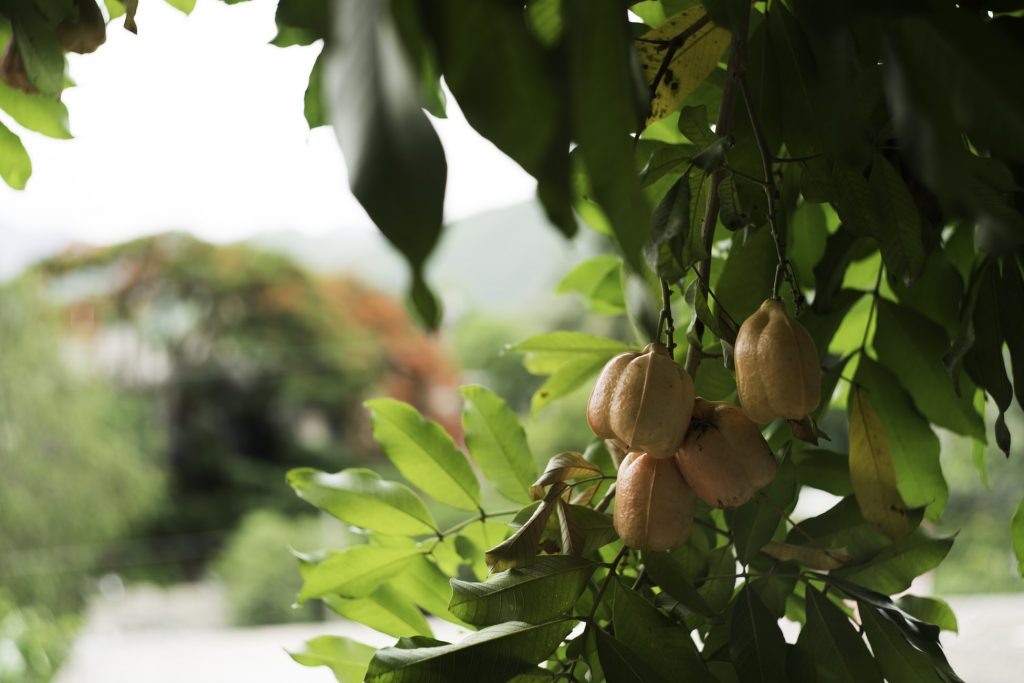
22. Paw paw
The Pawpaw is a small tree or large shrub from the Eastern United states. It is said to be the largest native edible fruit of North America. It can grow to a height of around 11 metres with its truck rarely getting more than 30cm in diameter.
This makes it a manageable tree for smaller homesteads or medium sized food forests. With fruits looking almost like a mango they have a yellow flesh with a sweet custard flavour. This tree has a fibrous, inner bark which can be used for making ropes and even fishing nets.
The Pawpaw also has attractive deep, red flowers and ornamental foliage making it good for gardens. This versatile tree with its many attributes would be a credit to any self sufficient homestead.
Thank you for reading our article on the best trees for a self sufficiency and homesteading. Did we miss anything? Please feel free to comment below if you have a useful tree on your homestead.
Back to home

How Self Sufficiency and Homesteading can stop Climate Change

How much land do you need to be self sufficient?
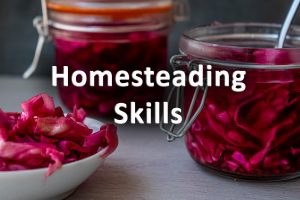
Homesteading skills, for Self Sufficiency
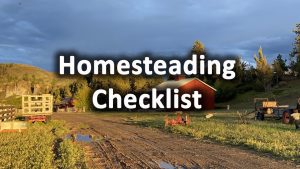
Homesteading Checklist for self sufficiency

A beginner’s guide to self sufficiency & its benefits

15 recipes for self sufficiency

How many chickens do you need to be self sufficient?

27 foods you can forage for free near your home
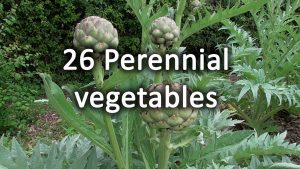
26 Perennial vegetables for the garden

Self sufficient homes

31 Homesteading projects

15 Ways to Store Food without Electricity

The best Climate for self sufficiency
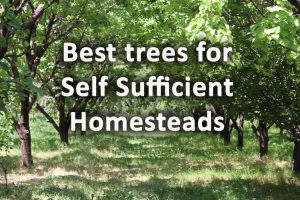
The most useful 22 Trees for a self sufficiency & homesteading
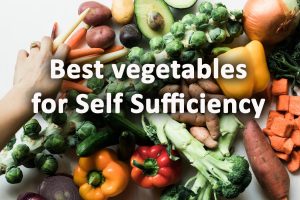
31 Vegetables for self sufficiency

What animals do you need to be self sufficient?

How to stop Climate Change with Crops – Crops for climate change

Temperate Food forests

32 Homesteading products for self sufficiency

10 Ways to Sustainably Heat Your Home

10 Ways self sufficient homesteading can be good for your health
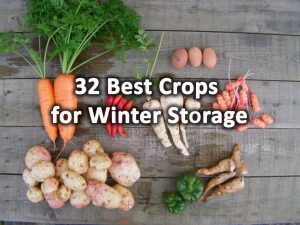
32 Best Crops for Winter Storage
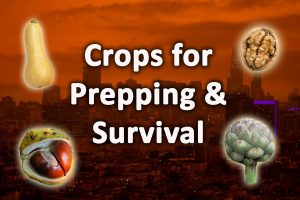
34 crops for prepping and survival
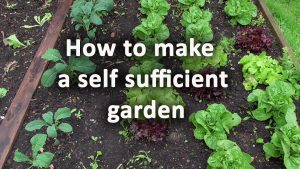
How to make a self sufficient garden
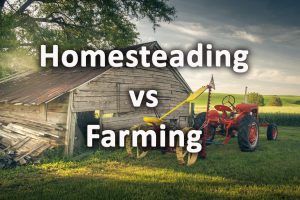
Homesteading verses farming what’s the difference?

Self sufficient greenhouse gardening

12 Crops which add nitrogen to the soil

32 of the best crops for Polytunnels

12 Best Crops for Carbon Sequestration
